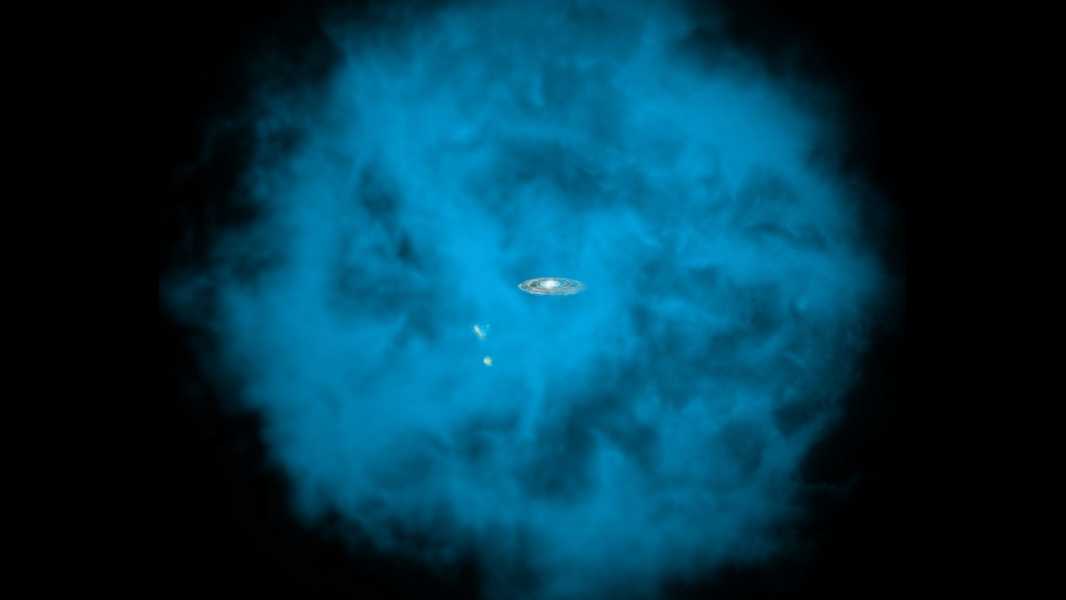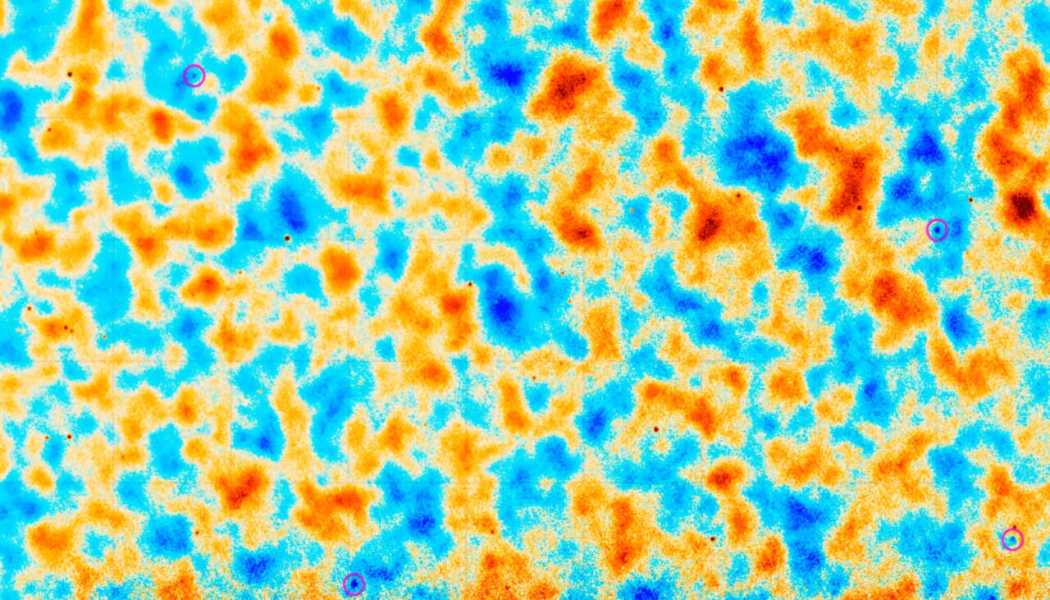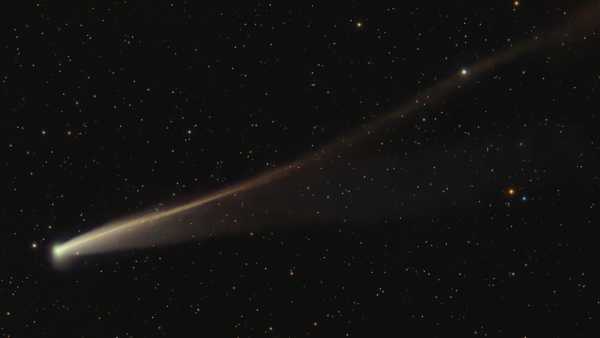
An artist's impression of the halos of ionized gas surrounding the Milky Way (center). These gas halos may contain significantly more of the universe's normal matter than previously thought. (Image credit: NASA/CXC/M.Weiss; NASA/CXC/Ohio State/A Gupta et al)
The Universe's missing matter may finally have been discovered.
Astronomers believe that ordinary matter—that is, everything that is not dark matter—makes up about 15 percent of the total mass of the universe. However, over the years, researchers have had difficulty quantifying it: They have been unable to detect about half of this “ordinary” matter in stars, galaxies, and other observable cosmic structures.
But now a large international team of scientists has found that the diffuse hydrogen gas that surrounds most galaxies is much larger than scientists previously thought. It is so vast that it may account for most of the missing matter in the universe, the researchers say.
“The measurements are clearly consistent with detecting all of the [missing] gas,” study co-author Simona Ferraro, an astronomer at the University of California, Berkeley, said in a statement. The study is currently available on the preprint server arXiv and is being peer-reviewed for publication in the journal Physical Review Letters.
The Hunt for the Missing Matter
For this study, the scientists used data from the Dark Energy Spectroscopic Instrument (DESI) at the Kitt Peak National Observatory in Arizona, as well as data from the Atacama Cosmology Telescope in Chile.
Using DESI observations, the team collected images of about 7 million galaxies to measure faint halos of ionized hydrogen gas at the edges of galaxies. These halos are typically too faint to detect using standard techniques. So the team measured how much the gas dimmed or brightened the cosmic microwave background radiation — the leftover radiation from the Big Bang that is spread throughout the universe.

A map of the cosmic microwave background radiation obtained by the Atacama Cosmology Telescope. The circles indicate where ionized hydrogen gas scatters the radiation.
The team also found that clouds of ionized hydrogen form ghostly, nearly invisible threads between galaxies. If this web connects most galaxies in the universe, it could span large enough distances to explain previously inaccessible matter.
Black holes on duty
The discovery could also change our understanding of how black holes behave. Scientists initially believed that
Sourse: www.livescience.com





